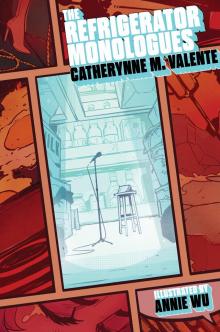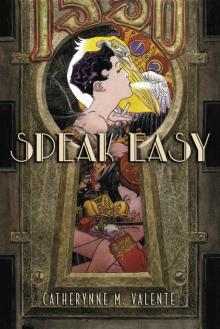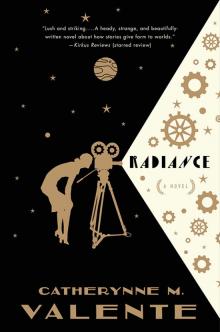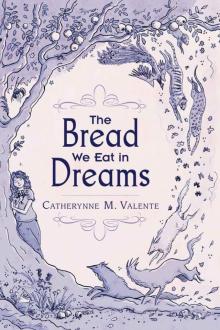


TV Development Guide, Page 8
Stephanie Varella
hard.
If you have a first-look deal with a studio, you also have the free-
!87
ACT 3
dom to sell your project to another studio after they pass on it.
However, most studios will support producers and their projects
and not pass on them. If they did, they would be taking a big risk
that another studio would snatch it up. What if it becomes a huge
hit? It would be a terrible financial loss for them.
An example of this is what happened with the first CSI show.
ABC Studios passed on the project, and ATLANTIS/ALLIANCE
picked it up. This show has made billions of dollars for AT-
LANTIS/ALLIANCE, and ABC Studios made a HUGE mistake
passing on it.
BLIND SCRIPT DEAL
This is a deal where a network or a studio hires a writer to write a
TBD (to be determined) script. This type of deal is not one that a
non-writing producer would ever get. This is solely for a writer.
This deal happens when a network or a studio wants to be in
business with a particular writer before that writer has pitched
any ideas to them. This is for a writer who has made at least one
successful TV show, movie, short, etc. A writer who has not had
something produced would not be offered this type of deal.
IF/COME DEAL
This is a deal for a writer where they do not get paid upfront. The
studio makes this deal because they would like to develop a
project with a writer and take it out to the networks. “If” it sells,
then the money “comes” and they get paid.
STRATEGIES FOR SELLING A TV SHOW
1. HOW TO GET STARTED
When I began working in television development in the 1990s
( discussed in the “Teaser” of this book), the usual path writers/cre-
ators would take in order to sell their TV show or series was to
!88
ACT 3
work their way up the ranks in television production. Almost
every writer had to start out on a TV show as an assistant and
work their way up to becoming an executive producer. At that
point, the networks might be open to their ideas for development.
Writers would then pitch their ideas to a studio or production
company development executive. If they liked the idea, they
would work together on the pitch. Then, they would bring the
fleshed out pitch to the networks and hope for a bidding war from
the Big Six.
This method still exists today. However, in the last few years there
have been many examples of young writers who were able to by-
pass this system. Today, a novice writer/creator can make a show
and not have to sell it to a network! ANYONE with a phone, lap-
top, the internet and a dream can make a TV show and, as dis-
cussed, there are platforms for viewers to watch it, i.e., YouTube,
and even new websites like SeedandSpark.com. This is also a way
for young writers and producers to get noticed by networks and
possibly SELL their show and ideas to them. It’s not something
that happens often, but today this is possible. This was impossible
just 10 years ago.
Similarly, if you’re looking to get noticed as a writer, and possibly
work on a show, there are online contests, websites and consul-
tants that can help get your script seen by producers and studio
executives.
2. "WHO’S IN THE PACKAGE?”
You may hear this question from network executives when pitch-
ing your project. If you are a non-writing producer or develop-
ment executive at a studio describing your project to a network,
they will want to know the auspices, or attachments, involved.
This includes all the people and organizations affiliated in any
way to the project. For the networks, it really is all about the
whole package. They believe that knowing the team behind the
project will give them a better idea of the project’s potential.
!89
ACT 3
Attaching key people to your project can definitely improve your
chances of selling it. In fact, it is very desirable and sometimes
essential. For young producers especially, it’s better to have
someone with known credits attached to your project. “Key” is
the important word here because there are some people you can
attach that you may think any network would love to work with
only to find they are not loved everywhere for every project. By
attaching these individuals, you may inadvertently hurt your
project. For this reason, it is important to learn everything you
can about the network and/or studio that you want for your
project.
There are some well-known individuals who are so beloved
everywhere (at all networks) that they can get almost ANY project
‘green-lit’. This is usually because they have had a lifetime, or at
least a good amount, of successful movies and/or TV shows. It’s
important to note that these people are nearly impossible to at-
tach. They are few and far between. But, if you are lucky enough
to have a personal connection with them, or be discovered from
your work, that would be wonderful. This was the case with
LENA DUNHAM who was discovered by JUDD APATOW. They
went on to make HBO’s Girls.
This type of package should not be confused with another type of
package called, an ‘Agency Package.’ Here are the differences:
AGENCY PACKAGE
The talent agencies, like Creative Artists Agency (CAA), William
Morris Endeavor (WME) and United Talent Agency (UTA), get a
fee on shows when they represent key people or companies at-
tached to a project. Most of the time, they will split these fees with
other agencies who represent other key people. Key people can be
the creator/writer, non-writing producer, director, and/or star.
Before going to print, the WGA was in the process of determining
if the practice of collecting package fees by agencies represents a
conflict of interest to their clients (writers, producers, talent). The
!90
ACT 3
reason they are looking into this now is because, over the years,
agencies have started to act more like production companies, with
a few actually having production companies within their organi-
zation.
Since these agencies are getting fees from the budgets of shows, it
has become more financially advantageous than getting commis-
sions from individual clients. Therefore, it is not surprising that
they have been spending more time and effort into putting these
packages together.
In 2016-2017, the WGA found that about 90 percent of the 300
shows produced that year were packaged! The Guild is now talk-
ing about revising their 42-year old agreement, "Artists’ Manager
Basic Agreement” (AMBA) with the Association of Talent Agents
because of this huge conflict of interest on the part of agencies.
They say the current agreement is no longer serving their clients.
Under the current deal, agencies are called, “Agency as
Employer,” and the Guild feels that certain agencies, i.e., WME
and CAA, are
becoming active in the production, financing and
distribution of shows. The agencies say they can do this because
they have “related production entities,” e.g., Endeavor Content,
IMG Productions, Media Res and Bloom. CAA has Tornado Pro-
ductions and Platform One.
The Guild believes that the talent agents have a fiduciary obliga-
tion to put the interests of their clients ahead of their own. In
April 2018, the Writers Guild sent a 12-month notice to the Associ-
ation of Talent Agencies stating that it must terminate the AMBA
deal. ( Variety, “Writers Guild Seeks to Renegotiate Agreement with Agents,”
2018)
If this deal is terminated, it would be a game-changer for inde-
pendent producers and writers. For non-writing producers who
are not represented, how can they compete? For the writers, it
would be like having their employer also be their representative!
!91
ACT 3
ATTACHMENTS
The best and easiest way to get attachments is if you know, or are
related to, someone you would like to attach to your project. Of
course, this is not the case for most people.
The next best way is to network and reach out. In today’s world,
we are all much more accessible than we ever were. Almost
everyone in the business has some sort of social media platform,
including writers and executive producers. Reach out. If you get
no response you are no worse off than if you hadn’t tried.
As mentioned earlier, there are also websites connecting writers to
producers (e.g., Inktip.com, Blcklst.com, VirtualPitchFest.com), as
well as crowd-funding/funding websites (e.g., Slated.com,
SeedandSpark.com).
The key is to NEVER GIVE UP!
3. DETERMINE IF YOU NEED A STUDIO
If you have a project that is really right for a particular network,
going to their sister studio first and trying to get them on board
would probably help the project.
However, today some writers and non-writing producers are able
to go directly to the networks without having the support of a
studio and/or production company. There are even certain net-
works that would prefer this because they then can “lay off” (give)
the project to their own studio, which is financially beneficial for
them.
If you do not fall into that category, having the support of a studio
can be very beneficial for your project. The way to get a studio
attached is:
a. Have your agent or manager help set up meetings.
!92
ACT 3
b. If you are a producer without representation but have the
rights to an IP, you can cold call studios to see if they will meet
with you because you have this property.
c. If you have a showrunner attached, his/her representative will
have definite opinions about attaching a studio.
Having a studio attached before you go out with your project is
not always the best choice, so it’s important to figure out if it will
help yours move forward.
4. DETERMINE THE BEST FIT FOR YOUR SHOW
As discussed earlier, a network’s brand is specific to their demo-
graphics. Do they cater to children, teens, the 18 to 49 year old
demographics or the Baby Boomer generation? Do they produce
science fiction dramas or historical series? Do they only produce
reality series? Knowing the kind of programming that is working
for each network will help you figure out where to go.
Some producers, studios and development executives feel you
should also go to the networks that are not a seemingly good fit
for your show or in line with their brand. I am one of those peo-
ple because you never know. Sometimes networks are having
conversations about wanting shows that are against their brand
and it is possible that they are looking for exactly what you are
selling. Give your project every chance. Even if you don’t get the
deal, you’ve gotten another chance to practice your pitch!
5. ARE YOU SELLING A SPEC SCRIPT?
Something that has just starting happening over the last five to ten
years is for writers to write a spec script, and/or episodes, and/or
bible of the series and submit it directly to the networks.
Writing a spec is a much more risky strategy than going out with a
pitch. It requires the writer to do a lot of writing without the
guarantee of getting paid. At one point, the market became so
!93
ACT 3
saturated with specs that the networks got less interested and ex-
cited about them. But the fact is that the writer/creator has total
creative freedom with writing a spec. If the network read and
liked your script, a meeting would be set up with the network to
discuss the full series vision. Many shows have been sold this
way, for example, House of Cards, Desperate Housewives, Breaking
Bad.
When you are ready to send it out, there are two basic strategies.
1. Send the spec script to the network. If they like it, you can
then meet with them to pitch the series.
2. Meet with the network first, and then leave the pilot script be-
hind.
In my experience, I find the first strategy is better because if the
network ends up not liking your script, you’ve wasted your time
and theirs. It is best to come in after they like it and are already
interested.
6. SHOULD YOU CHANGE ELEMENTS OF YOUR SHOW
TO SELL TO A SPECIFIC NETWORK?
No. As discussed in previous chapters, when you are developing
an idea and/or script, it is important to determine what the show
is organically (its essence), and then figure out where it belongs.
Yes. You need to make sure your show is sellable (unless you are
planning to finance it yourself).
The ideal scenario for pitching is to have many channels and out-
lets where you can sell your show. The more you have, the better
your chances to sell it. Sounds logical, right?
The irony is that, even though there are over 50 places actively
buying content today, writers usually find only about five places
to pitch. All the networks have a very specific brand or niche.
!94
ACT 3
The reality is that only one or two of them will be your show’s
“perfect” place.
7. TIMING IS EVERYTHING
Everything in life is about timing, and this is especially true when
it comes to TV Development.
You may have heard the term “cult hit.” This is when an excellent
show does not find a big audience, but has found a niche and has
developed its own fan base. This is an example of how timing is
important in television. These cult hits have become hits because
they got popular after they were released (usually with a specific
demographic). If they were successful when they were released,
then they would be true hits. They are successful all because of
timing. It is said that these cult hit shows are ahead of their time.
Another example of good or bad timing: A show that works in
2001 may not be right for 2018, and vic
e versa. So if your show
doesn’t sell today, hold onto it. In time, the network and the
world may be ready for it.
Similarly, as discussed earlier, understanding when to take your
project out, and to which network, can make or break your suc-
cess.
When taking out a PITCH:
• Make sure your pitch is ready. ( See Act 2 “The Pitch” )
• Figure out which network to go to first, second, and so on. It
is essential because you will learn how to improve your pitch
each time. You do this by setting up your first pitch meeting
where you think you have the least likely chance of selling your
project. After that go to the network where you think is your
best chance, the place that feels like the best fit.
• Have you gotten the attachments you wanted? The people
!95
ACT 3
you have attached may have agents that will call for you as
well.
• Visual Aids. Did you decide if your project needs them, and
are they done?
8. DETERMINE IF YOUR PROJECT IS READY
How do you know when to take your project out to the market?
The answer is when it’s ready.
Remember, there are no guarantees on selling it. You can only try.
No one can tell you that you will sell your show for sure. If they
do, they are selling you snake oil. The truth is, the world is chang-
ing, this business is changing and, if you keep working, doing
what you love, using the tools in this book, you will have the best
chances for success.
WHAT IS A TRANSMEDIA CAMPAIGN?
This is a strategy that consists of having a single narrative (story)
that continues on through different mediums, e.g., web + twitter +
TV.
At one end of the spectrum is a strict adaptation; that is translat-
ing from one medium into another. This would be a book that be-
comes a film, or a comic book that becomes a video game (e.g.,
film + comic book + video game).
At the other end of the spectrum is pure transmedia; where one
medium “connects” with another. This happens when a book
ends at the moment the film begins, or a comic book shows the
origin of a hero that is featured in a video game.
Here are some examples of Transmedia projects:
!96
ACT 3
• Star Wars – Perhaps the most extensive world that is built
across platforms.
•
Star Trek
•
The Matrix














